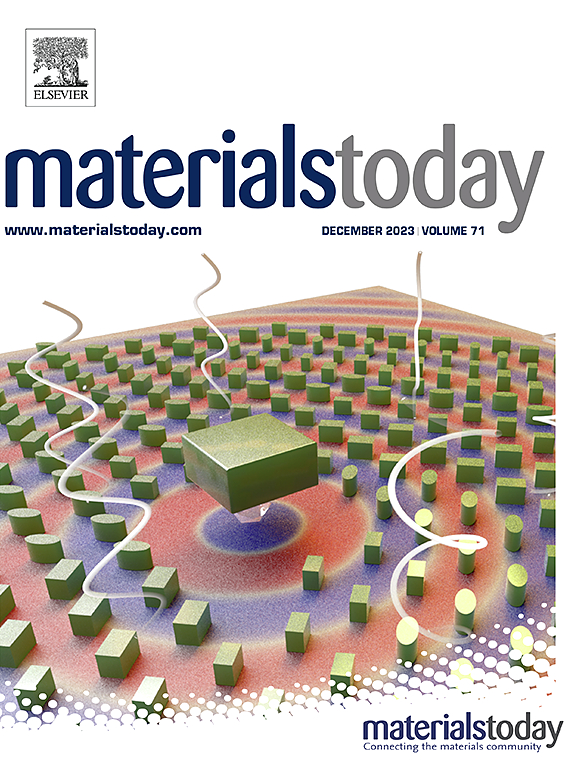Adaptively-generated multivalent active sites suppress destructive phase transition in high-nickel layered oxide cathodes
IF 21.1
1区 材料科学
Q1 MATERIALS SCIENCE, MULTIDISCIPLINARY
引用次数: 0
Abstract
Phase stability of high-nickel layered materials is crucial for enhancing the cyclic performance of lithium-ion batteries. The successive phase transition, accompanied by lattice contraction and stretching in high-nickel cathodes, results in continuous accumulation of lattice strain and structural destruction. Here, we propose a novel approach of adaptively-generated multivalent transition metal disordering to inhibit the destructive phase transitions in layered materials. To demonstrate feasibility, we design a binary high-nickel cathode material, LiNi0.85Fe0.15O2(LNF8515), which utilizes the variable valence of Fe to prevent the successive phase transition through charge delocalization. Effective regulation of the redox mechanism of transition metals through potentiostatic control is essential to mitigate significant continuous phase changes resulting from polarization. In LNF8515, the absence of Li+/Ni2+ anti-site defects enables the material to achieve an initial capacity of 217.8 mAh g−1. LNF8515 does not undergo continuous phase transition, resulting in improved cycling stability and reduced strain. In-situ XRD, grazing incident wide angle X-ray scattering and first-principles studies indicate that adaptively-generated multivalence of Fe2+, Fe3+, and Fe4+ prevent charge localization, suppressing the continuum phase transition. This study paves a new avenue to improve the cyclic stability of high-nickel oxide cathodes.

自适应生成的多价活性位点抑制高镍层状氧化物阴极的破坏性相变
高镍层状材料的相稳定性是提高锂离子电池循环性能的关键。在高镍阴极中,连续的相变伴随着晶格的收缩和拉伸,导致晶格应变的不断积累和结构破坏。在这里,我们提出了一种自适应产生多价过渡金属无序的新方法来抑制层状材料中的破坏性相变。为了证明其可行性,我们设计了一种二元高镍正极材料LiNi0.85Fe0.15O2(LNF8515),该材料利用Fe的可变价来防止电荷离域导致的连续相变。通过恒电位控制对过渡金属的氧化还原机制进行有效调节,对于减轻极化引起的显著连续相变至关重要。在LNF8515中,没有Li+/Ni2+反位缺陷使材料达到217.8 mAh g−1的初始容量。LNF8515不经历连续的相变,从而提高了循环稳定性并降低了应变。原位XRD、掠射广角x射线散射和第一性原理研究表明,自适应产生的Fe2+、Fe3+和Fe4+的多价态阻止了电荷局域化,抑制了连续相转变。本研究为提高高镍氧化物阴极的循环稳定性开辟了新的途径。
本文章由计算机程序翻译,如有差异,请以英文原文为准。
求助全文
约1分钟内获得全文
求助全文
来源期刊

Materials Today
工程技术-材料科学:综合
CiteScore
36.30
自引率
1.20%
发文量
237
审稿时长
23 days
期刊介绍:
Materials Today is the leading journal in the Materials Today family, focusing on the latest and most impactful work in the materials science community. With a reputation for excellence in news and reviews, the journal has now expanded its coverage to include original research and aims to be at the forefront of the field.
We welcome comprehensive articles, short communications, and review articles from established leaders in the rapidly evolving fields of materials science and related disciplines. We strive to provide authors with rigorous peer review, fast publication, and maximum exposure for their work. While we only accept the most significant manuscripts, our speedy evaluation process ensures that there are no unnecessary publication delays.
 求助内容:
求助内容: 应助结果提醒方式:
应助结果提醒方式:


